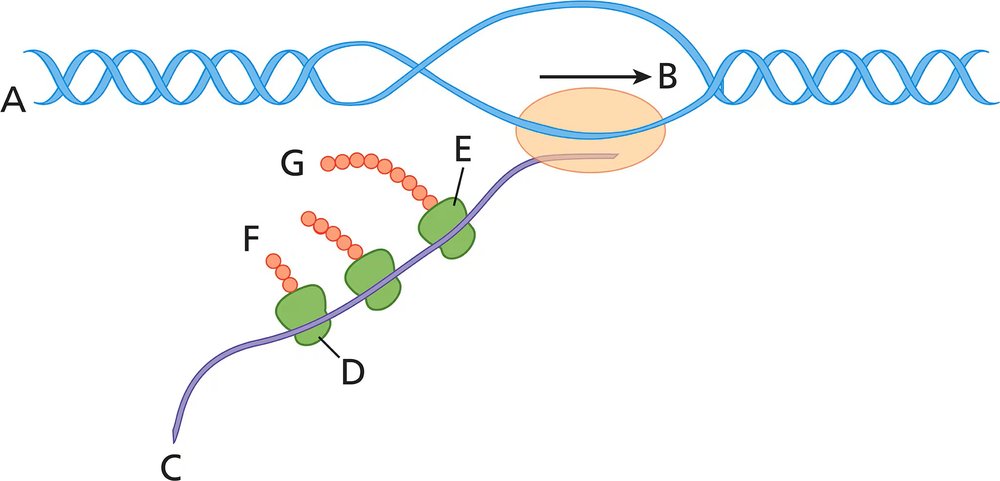Here are the essential concepts you must grasp in order to answer the question correctly.
Transcription
Transcription is the process by which the genetic information encoded in DNA is copied into messenger RNA (mRNA). This process involves the enzyme RNA polymerase, which binds to the DNA at a specific region and synthesizes a complementary RNA strand. Understanding transcription is crucial for interpreting the diagram, as it illustrates the steps and components involved in this fundamental biological process.
Recommended video:
RNA Polymerase
RNA polymerase is the enzyme responsible for synthesizing RNA from a DNA template during transcription. It unwinds the DNA double helix and adds RNA nucleotides in a sequence complementary to the DNA strand. In the diagram, the structure labeled 'B' likely represents RNA polymerase, which is essential for initiating and elongating the RNA strand, making it a key player in the transcription process.
Recommended video:
Promoter Region
The promoter region is a specific sequence of DNA located upstream of a gene that signals the start of transcription. It is where RNA polymerase binds to initiate the transcription process. In the diagram, the structure labeled 'E' may represent elements of the promoter region, which are critical for the regulation of gene expression and determining where transcription begins.
Recommended video:

 Verified step by step guidance
Verified step by step guidance Verified video answer for a similar problem:
Verified video answer for a similar problem:


 6:32m
6:32m